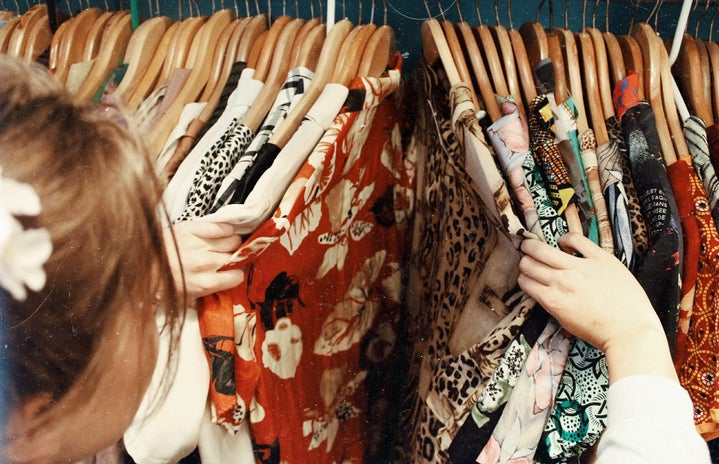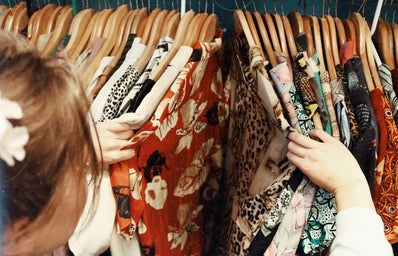Do you know what makes up “10% of the total global carbon emissions…”(Maita)? I’ll give you a hint…it’s probably in your closet.
The answer is fast fashion. We are all guilty of buying that super cute dress because, “it’s only $10”, and there’s no shame in that. Clothes are expensive, and we all want to look and feel cute on a college budget. However, it is our job to educate ourselves and work for a better tomorrow.
So, let’s talk about how horrible fast fashion is for our planet, what causes it, and how we can stop it!
1. Fast fashion is killing our planet
This industry pollutes our water, air, and land. Fast fashion, “dries up water sources and pollutes rivers and streams, while 85% of all textiles go to dumps each year. Even washing clothes releases 500,000 tons of microfibers into the ocean each year, the equivalent of 50 billion plastic bottles” (McFall-Johnsen).
This fact tells us that our water sources are being pumped full of plastic, thanks to the fashion industry. Simply washing polyester clothing is allowing microplastics to seep into our water. Microplastics are dangerous because they are very small pieces of plastic that will not break down or decompose over time. As for affecting our land, “The equivalent of one garbage truck full of clothes is burned or dumped in a landfill every second” (McFall-Johnsen).
“According to the UN Framework Convention on Climate Change, emissions from textile manufacturing alone are projected to skyrocket by 60% by 2030”
Rashmila Maita
2. what causes this?
If fast fashion is so awful for our planet, why is it all the rage?
Fast fashion is so popular right now because it satisfies our need for instant gratification and cheap prices make it accessible to everyone. Thanks to, “cheaper, speedier manufacturing and shipping methods, an increase in consumers’ appetite for up-to-the-minute styles, and the increase in consumer purchasing power…” (Hayes), everyone and their mother probably own clothing from fast fashion giants such as Zara, Forever 21, or H&M. Another contributing factor is how profitable fast fashion is for clothing companies. They outsource their clothing production to third-world countries such as Bangladesh, where they can get away with having inhumane working conditions and hours, due to lack of labor laws.
“In 2019, Zara’s annual net sales were…about $22 billion. H&M’s annual net sales in 2019 came to…about $24.8 billion.”
Adam Hayes
3. How can we fight it?
Now that we have the facts, what can we do as individuals to fight the fast fashion industry and save our planet?
The best thing we can do is buy from slow-fashion companies or secondhand stores and keep in mind who the real enemy is.
Slow fashion “is the widespread reaction to fast fashion, the argument for hitting the brakes on excessive production, overcomplicated supply chains, and mindless consumption. It advocates for manufacturing that respects people, the environment and animals” (Maiti). This means that clothes are made in small batches with sustainable textiles, the workers are paid a living wage, and only two collections will be released every year in the spring and fall, instead of fast fashion’s trend of new styles every two weeks. Buying second hand from thrift or consignment stores is the best way to keep clothes out of landfills. Some great thrift stores include Goodwill, Plato’s closest, Too Good to Be Threw, Clothes Mentor, and Buffalo Exchange.
Lastly, we need to remember that those who buy from fast fashion companies because it’s all they can afford are not in the wrong. The bad guys are the owners of fast fashion companies who know very well the effects that their business has on our environment, yet don’t stop because they prioritize lining their own pockets.
It will take time, but some action is better than no action. I strongly urge you to think twice before your next shopping spree. Is that $10 dress worth all of the environmental damage?


